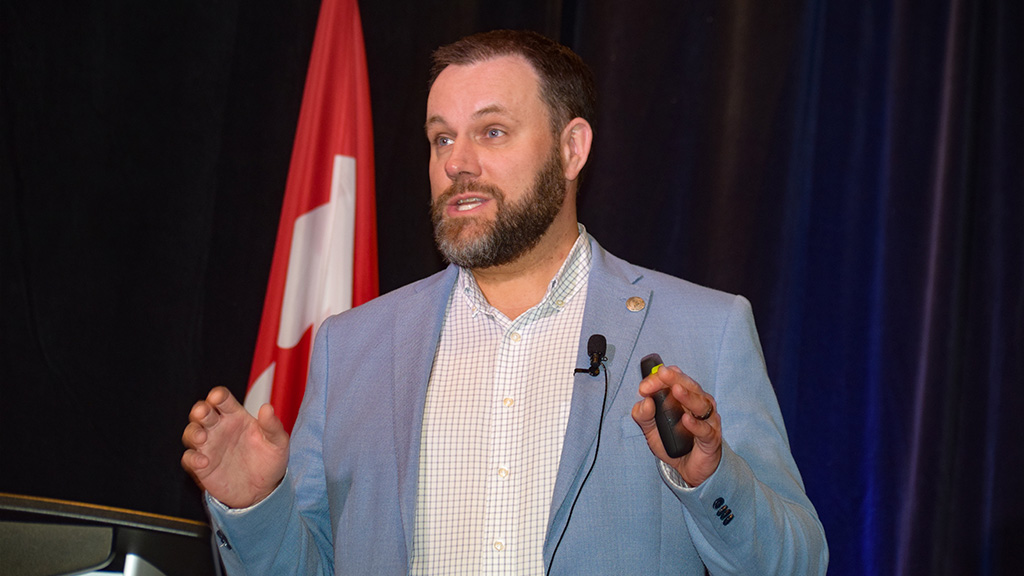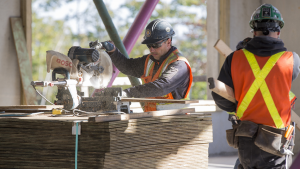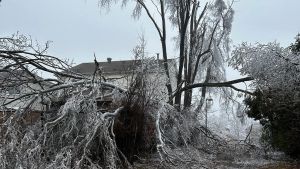The recent skilled trades summit held in Toronto by Skilled Trades Ontario (STO) was billed as Unleashing Ontario’s Potential, and it became clear during the proceedings the path to achieving that potential starts in Atlantic Canada.
New Brunswick and the other three Atlantic provinces are miles ahead of Ontario in the development of apprenticeship curriculum standards, training standards and program sequencing, according to STO CEO and registrar Melissa Young.
She said during a break in the May 3 session that Ontario has to get its act together on those key building blocks before harmonization of its system with other jurisdictions can take place.
Only then will Ontario reap such benefits of harmonization as greater apprenticeship and journeyperson mobility, a greater pool of apprentices for employers and higher apprenticeship completion rates.
Nova Scotia Deputy Minister of Post-Secondary Education, Training and Labour Daniel Mills, the event’s keynote speaker, collaborated closely with Young during her time in the province in various capacities promoting the Red Seal trades and apprenticeships. She has served with the Canadian Council of Directors of Apprenticeship (CCDA) and the Canadian Apprenticeship Forum.
“What I’ve discovered more and more is the lack of really good integrated policy,” said Young. “When Dan was speaking this morning about the 22 policies they harmonized in Atlantic Canada, well, we don’t even have half of those policies here.
“So those are some pretty big gaps that we have to fill.”
Young was given the top job at STO when it was inaugurated in January. The agency is the lead organization for the harmonization project in Ontario, in partnership with the Ministry of Labour, Immigration, Training and Skills Development.
The four elements of harmonization are total hours, trade names, levels of in-school training and the sequencing of the learning outcomes across those four levels.
On the national effort, STO is working with the CCDA.
Young offered an example of how harmonization will offer benefits down the line. Currently in Ontario, she said, certification exam pass rates are only 44 per cent, and it’s clear one problem is Ontario does not give level (preliminary) exams, only final certification exams.
Elsewhere, level exams serve to identify early when an apprentice has a gap in their learning and trainers then address it.
“Here, we don’t know that they have an issue usually, or know that there’s a gap, until they write that C of Q,” Young said.
“And then they don’t pass and then if they don’t pass again it’s like, OK, why aren’t they passing?”
It would take a lot of work to implement level exams, said Young, but once Ontario is harmonized with the other jurisdictions in the Red Seal trades, “We can beg, borrow and steal those level exams from other jurisdictions. We don’t need to reinvent the wheel.”
There is some resistance from the trades during consultation on changes to training, certification and even trade names, Young said, but it has to happen.
“You’ve got to stop thinking about what you want and think about what’s good for the overall industry and the individual and the program,” she said.
“Harmonization is one of our top priorities, and we’re working at it now. We’ve already got a few trades that I’ve signed off on, but they go to the ministry, and then the ministry has to do their thing to get them implemented.”
The closest Ontario has to trades that are fully harmonized with others across the country are the three heavy equipment operator trades, said an STO spokesperson.
The spokesperson said it will take several years to align Ontario’s programs with the national Red Seal program.
The program cycle for updating interprovincial Red Seal standards is approximately five years so Ontario’s harmonization schedule will need to coincide with that process.
Mills said the four Atlantic provinces began to advance on harmonization over 10 years ago after a premiers’ summit, when two of the premiers learned they both had children who were apprentices.
At a May 2014 Council of Atlantic Premiers’ meeting, the premiers agreed to accelerate apprenticeship harmonization and the Atlantic Apprenticeship Harmonization Project was born.
“Atlantic Canada is well down the path of harmonizing all their trades, their levels even,” Mills said, listing progress on logbooks, hours, levels, curriculum, number of weeks, number of hours and challenging processes.
“We’ve made huge progress. I think we’re up to 85 per cent of apprentices are harmonized.
“I’d love to see it happen across the country.”
Young noted Ontario started the harmonization process before Atlantic Canada but once the four eastern provinces got started, “They went to the moon with it.”
Follow the author on Twitter @DonWall_DCN











Recent Comments
comments for this post are closed